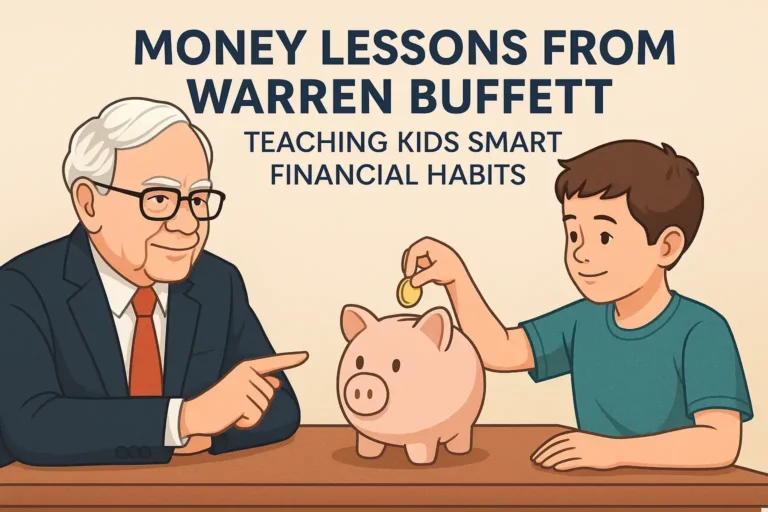Originally Published: February 2025 | Last Updated: September 2025
Your step-by-step playbook for single-income households, mid-career course corrections, and retirees who want both security and joy.
Why this matters now
If you have ever lain awake stressing over retirement in a single income house, you’re not alone. Between rising costs, unpredictable markets, and life’s curveballs, planning for tomorrow while living today is a hard balancing act. This guide is written for two audiences at once: people just starting their careers and people already retired (or near retirement) who need clarity — and it’s built for real-life, single-income realities.
This article “Retirement Planning for Young Professionals and Retirees” covers practical strategies for everyone — young professionals, single income retirees, single parents, and those who’ve delayed planning. You’ll walk away with a clear checklist, where to put your savings first, how to tweak investments, and exactly how to create guaranteed income in retirement.
(If you came here asking, “How much money does the average person need to retire?” — keep reading. We will answer that and show you how to calculate your own number.)
1. The realities: Why retirement planning needs to be different for single-income households
Most retirement guides assume dual incomes, flexible budgets, and generous employer matches. But if you’re in a house with one paycheck, the math and priorities change.
Single-income households — whether a young couple where one spouse stays home or single earner retirees relying on one pension/social security stream — face two structural risks:
1. Lower cumulative savings capacity (because only one person contributes).
2. Higher vulnerability if the earner becomes ill, unemployed, or dies.
That means you must prioritize protection first, growth second. In plain terms: emergency fund, insurance, and debt management come before risky bets. The result? A safer, more reliable path to true financial freedom.

2. The golden triad: Save → Protect → Grow
These three steps apply whether you are 25 or 65.
Save (consistently): Automate a percent of every paycheck into retirement planning and tax-advantaged accounts. Even modest, regular contributions beat erratic big deposits.
Protect: Emergency fund (6–12 months if you’re a single-income household), adequate health insurance, life insurance (if you have dependents), and long-term disability.
Grow: Use tax-advantaged accounts (401(k), IRA) first, then taxable investments. Diversify. For younger households, tilt to equities; for retirees, more income and lower volatility.
3. Real stories, practical changes (so you can see yourself in the solution)
Story — The single income retiree who rewired her plan
Maya was a single income retiree whose nest egg felt smaller than her friends’. She had Social Security and some 401(k) money but no clear plan for income. By switching part of her bond ladder into an indexed annuity and selling a small unused rental property, she created a steady, predictable income that covers essentials — and kept a growth slice invested for inflation. No drama. More peace.
Story — Young professional course-correct
Jason, 28, realized he’d spent six years building a portfolio of “fun” trades and zero retirement contributions. He set up automatic deposits into his employer’s 401(k) (to capture match) and opened an IRA. He also did two things that changed everything: increased his emergency fund to 6 months, and learned simple asset allocation rules. Ten years later, compounding did the rest.
These examples show the path — not fancy hacks, but practical, repeatable actions.
4. How to calculate your retirement number (and what to do with it)
Rather than giving a single universal number (which is meaningless), use a small process:
1. Estimate your annual retirement expenses in today’s dollars (housing, healthcare, food, travel).
2. Multiply by 25 (the 4% rule — a starting point) to estimate a target nest egg.
3. Adjust for personal factors: pensions, Social Security, part-time work, healthcare needs.
4. Use a retirement calculator to simulate inflation and sequence risk.
If you want a quick baseline: people often ask, “How much money does the average person need to retire?” — the answer depends on your lifestyle. For many Americans, aiming for $1–2 million (for a comfortable, middle-class lifestyle) is common; but your number could be higher or lower. The important thing: stop guessing and compute your actual required corpus.
5. Smart account order: Where to save first
1. Employer 401(k) up to match — free money. If your employer matches contributions, contribute at least enough to get the full match.
2. Emergency fund (liquid) — 6–12 months for single household earners.
3. IRA (Traditional or Roth depending on tax bracket) — consider Roth for younger earners.
4. Then max 401(k) if you can — tax-deferred growth is powerful.
5. Taxable investments / HSA — if you have an HSA, treat it as a retirement account (triple tax-advantaged).
This order is particularly important for households with one wage earner (and for single income earners retirement planning).
6. The big choices: IRA vs 401(k) — how to pick
Use this rule-of-thumb:
• If you get an employer match, fund the 401(k) to the match first.
• If you’re eligible for a Roth IRA and expect higher taxes later, a Roth is powerful.
• If you have high income and need more shelter, max the 401(k).
• For investment choices: IRAs often give wider options than some 401(k) plans.
Both accounts are useful. When you weigh IRA vs 401(k), prioritize employer match and the tax treatment that best fits your current vs. expected future tax bracket.
7. For single-income households and single parents: special rules and tips
Many blog posts skip this, but if you’re a single income earner and single mother (or single father), your constraints are real. Here’s an army of practical moves:
• Life and disability insurance: Convert to longer-term coverage at affordable levels while young and healthy.
• Emergency fund target: 9–12 months if children are involved or if you run a small business.
• DFAS-style budgeting: Prioritize guaranteed needs (mortgage, food, childcare) and automate the rest.
• Tax credits and benefits: Investigate child tax credits, Earned Income Tax Credit (if eligible), and other local help.
• Retirement on one income: Increase savings rate when possible (bonus, tax refund), and consider side income that doesn’t require large time commitments.
If you’re searching online for “retirement tips Single income earner and single mother,” focus on protecting the family first; growth comes after stability.

8. Strategies specifically for single income retirees and single-earner households
If you’re already retired or close:
• Create an income plan: List guaranteed cash flows (Social Security, pension, annuities). Then map variable cash flows (withdrawals from IRAs).
• Ladder bonds and CDs: Smooth income and reduce sequence-of-return risk.
• Consider an immediate or deferred annuity for part of your portfolio to secure lifetime income (only 20–40% of assets — not all).
• Tax-efficient withdrawals: Taxable first vs Roth first strategies depend on tax bracket. Consult a tax pro.
• Healthcare planning: Medicare supplements, long-term care planning, and HSA management if you still have one.
These are not sexy, but they ensure comfort and reduce sleepless nights. Single-income households cannot afford avoidable mistakes.
9. How to make aggressive comeback plans (for those behind or burned out)
If you are facing retirement planning for single income burnout, or you’re well behind:
1. Audit expenses ruthlessly for a month — find money leaks.
2. Side-income sprint: Monetize skills for 6–12 months (freelance, tutoring, remote gigs).
3. Temporary higher savings rates: Shift 50–75% of side income into retirement for 1–3 years.
4. Delay claiming Social Security if possible — for each year you delay, benefits grow.
5. Consolidate high-interest debt — it’s often the biggest drag.
A focused 24–36 month sprint can change a decade of trajectory. That’s the magic of concentrated effort combined with compound returns.
10. Retirement planning for Gen Z — start now and win
If you are reading this as part of retirement planning for gen z USA, listen: time is your most underused asset. Start small, automate, and use tax-advantaged accounts.
• Use Roth accounts early — tax-free growth is massive for decades.
• Avoid lifestyle inflation — index annual raises to savings increases.
• Learn the basics: asset allocation, dollar-cost averaging, and retirement account order.
Two small moves at 22 will trump heroic moves at 42. That’s math, not luck.
11. The millionaires with average IQ: simple rules that work
You asked for content about retirement planning for millionaires having average IQ — the best part? Being a millionaire does not require secret genius. It is about consistent choices and simplicity:
• Keep a plan, automate, and reduce complexity.
• Use broad index funds and avoid trying to time the market.
• Manage taxes: tax-loss harvesting and tax-efficient withdrawals.
• Hold enough income-producing assets to sleep peacefully.
If you want a headline: simpler systems win. That’s the theme of retirement planning for millionaires having average IQ — consistent actions, not fancy bets.
A Good Read: Stopping Impulse Spending on Black Friday: The Ultimate Guide to Avoiding Temptation
Practical checklist — a ready-to-implement retirement planning
Immediate (next 30 days):
• Build/verify emergency fund (6–12 months for single-income households).
• Enroll in employer 401(k) and set auto-contribution to at least the match.
• Buy or confirm life/disability insurance if dependents exist.
• Open an IRA (Roth/Traditional) and start an automated monthly transfer.
Short-term (3–12 months):
• Pay down high-interest debt.
• Rebalance portfolio to match target allocation.
• Create a simple retirement cash-flow plan (income sources vs expenses).
• If suffering from single income burnout, test one side income channel and commit earnings to retirement for 12–24 months.
Annual:
• Increase retirement contribution when you get raises.
• Reassess insurance, estate documents, and beneficiaries.
• Run a withdrawal simulation for retirees (safe withdrawal rate scenario).
This checklist is the backbone for single income family retirement and single income earners retirement, and it’s practical enough to start today.
Tactical playbook: Investments, allocations, and withdrawal rules
Asset allocation by age (starter guide):
• 20s–30s: 80–90% equities / 10–20% bonds
• 40s: 70–80% equities / 20–30% bonds
• 50s: 60–70% equities / 30–40% bonds
• 60s+: 40–60% equities / 40–60% bonds (tilt to income)
Withdrawal rules for retirees (practical):
• Use a blended safe withdrawal: 3.5%–4% from the growth bucket + guaranteed income from pensions/annuities for essentials.
• For single income retirees, keep a larger cash cushion to avoid forced selling in market dips.
401(k) retirement planning tips:
• Capture employer match.
• Use low-cost index funds if available.
• Rebalance annually.
If you only remember one thing: match + low costs + diversification = drastically better outcomes.

Common mistakes to avoid (so you don’t sabotage years of work)
• Tapping retirement funds for non-essential purchases.
• Underinsuring in a single-income household.
• Ignoring Social Security claiming strategies.
• Being seduced by “hot” investments without understanding risk.
Many readers are here because they’ve been stressing over retirement in a single income house. The antidote is discipline and a written plan.
Frequently asked practical questions (FAQs)
Q: Can I retire early if I’m a single earner?
A: Yes — but you must plan for healthcare, a larger cushion, and potentially phased retirement (part-time work + partial withdrawals).
Q: Is buying real estate a good retirement strategy?
A: It can be, but treat real estate like a business: account for vacancies, taxes, and maintenance. A small allocation to REITs can provide exposure without management headaches.
Q: Should I prioritize paying off mortgage or saving more in retirement?
A: It depends. Keep some mortgage but prioritize retirement savings if you’re getting employer match and in a tax-advantaged situation.
Finally : make decisions that future-you will thank you for
If you are still stressing over retirement in a single income house, do this tonight: set up a 2% automatic increase in your retirement contribution starting next month. Tiny changes compound into life-changing outcomes.
If you are a single earner retiree, write down your essential monthly expenses and ensure they are covered by guaranteed income. Then optimize the remainder for growth.
This is the heart of retirement planning for young professionals and retirees: practical, compassionate, and relentlessly actionable.
Resources & tools (recommended next steps)
• Retirement planning calculator USA — run your numbers (many free tools exist; use one that models inflation and taxes).
• Free 401(k) audit — check for low-cost fund alternatives.
• Consult a fiduciary — particularly if you’re near retirement or managing sizable assets.
• Downloadable worksheet : if you want checklist for retirement planning as per your age just comment below.
Closing Call-to-Action
If you found this helpful, do three things right now:
1. Bookmark this post and run your numbers with a retirement savings calculator USA.
2. Share this post with someone you care about who is stressing over retirement in a single income house.
3. Drop a comment below: what’s the one financial move you’ll make this month?






